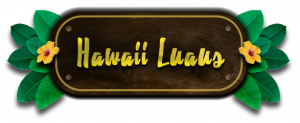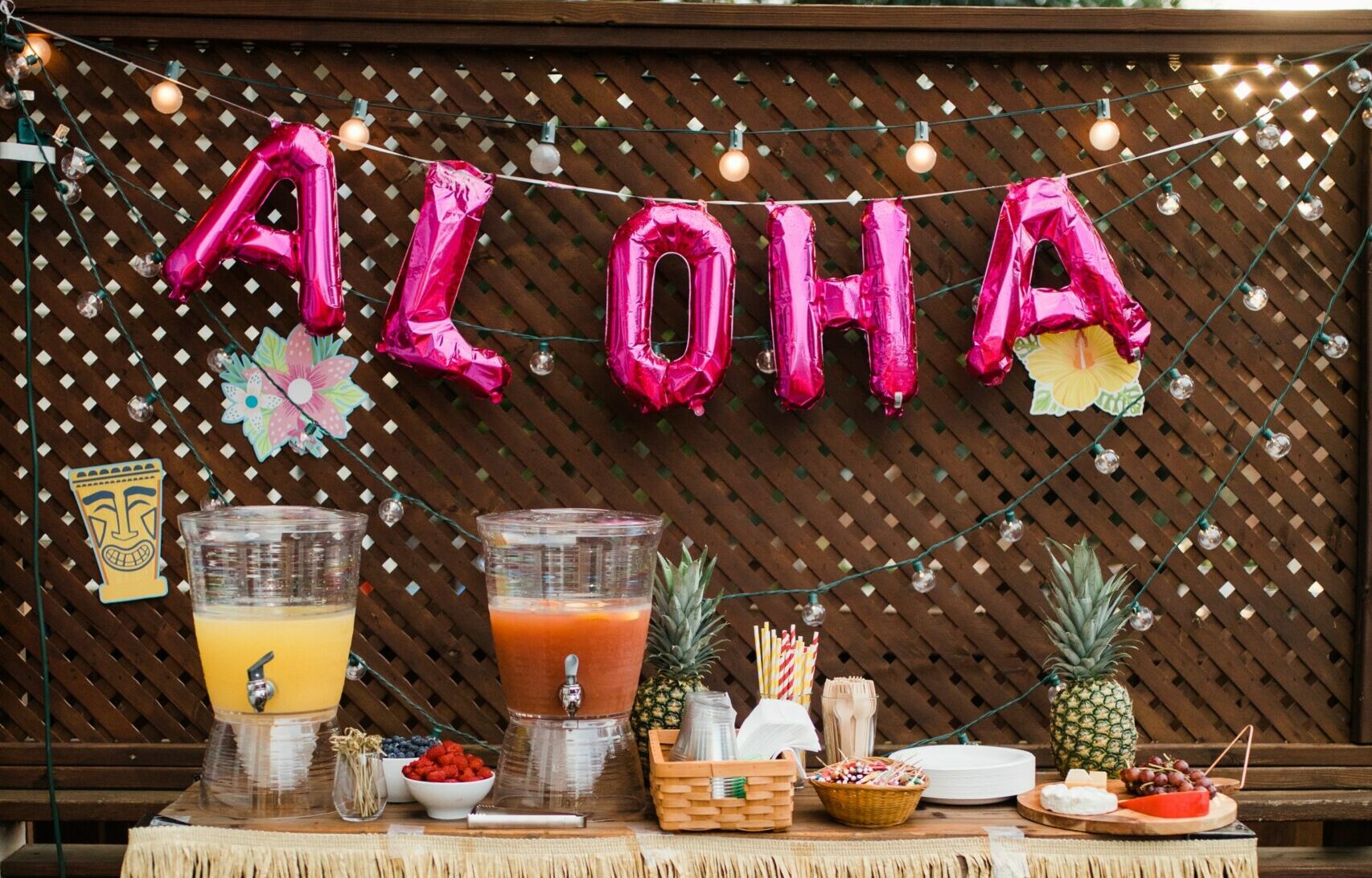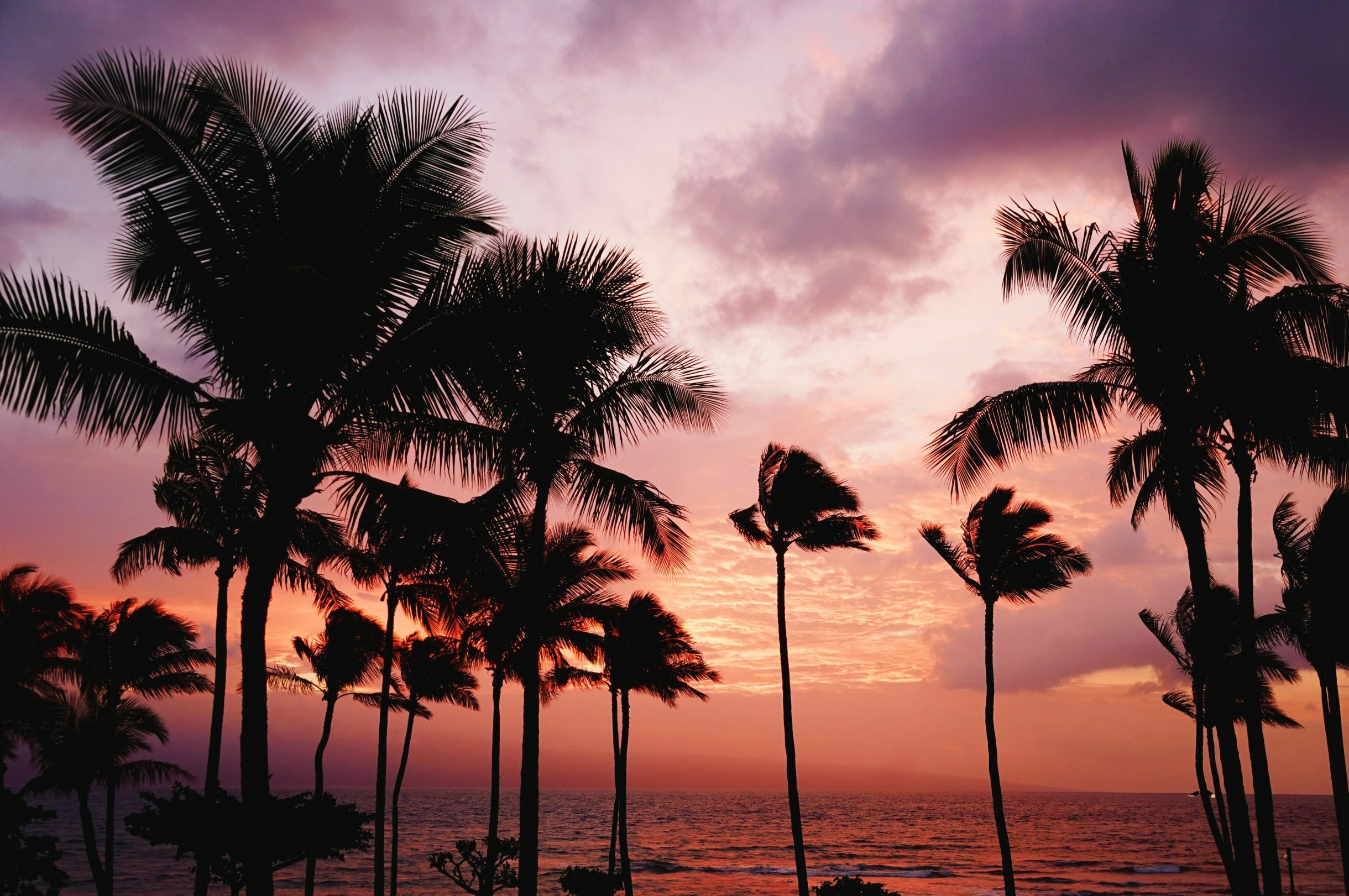Common Hawaiian Words You’ll Hear at a Luau
by Mark L., December 3, 2018

When you first arrive on this tropical paradise it can feel like entering a completely different country.
There’s the unique climate, the crystal blue waters, volcanoes, emerald green landscapes, and the towering sea cliffs. You’ll encounter new foods, culture, music, and more at every turn.
You’ll be introduced to a new language as well. And like any good traveler, you’ll want to learn a few common Hawaiian words before you visit.
Hawaiian Culture and Language Live on
Hawaii might seem like a foreign nation to some visitors from the mainland, and it should because, for most of its history, it was a foreign nation! Hawaii had hundreds of years of distinct cultural identity before being overthrown by U.S. businessmen. At that time, influences from the Pacific Islands thousands of miles away made their way into the island chain. One place this is most evident is at a Hawaiian luau, where you’ll hear words and phrases that were used by Hawaiians dating back centuries, along with others that are Hawaiian pidgin, a mash-up of the languages of the many cultures that made their way to the islands in more recent times.
The luau in its current form began more than 150 years ago, during a time of great change in Hawaiian history. Today’s luaus introduce visitors to Hawaii’s rich cultural heritage and language.
Common Hawaiian words you’ll hear at a luau:
Aloha
Hello and goodbye are the most common Hawaiian words you’ll hear the most in Hawaii You can bet you’ll hear a friendly “aloha” when you first arrive. Rather than greeting fellow party-goers with a “hello” at your Hawaiian luau, switch to “Aloha!” And feel free to use it whenever greeting someone on the island. Aloha also means love.
Hula

Traditional hula originated in Hawaii and is deeply rooted in Polynesian tradition. Dating back to ancient Hawaiians, the dance tells a story, typically the journey of travelers from across the Pacific to the islands. Hula dancing is a staple of the Hawaiian luau and is intricate to the point where every movement has a meaning. The hula is very deliberate and precise. Each subtle hand gesture and swaying of the hips tells a different piece of the epic story.
Imu
The imu is a tradition in just about every luau. It’s an underground oven in which a pig, chicken, or fish and vegetables are cooked over lava rocks lau lau style (see lau lau below). The main dish is inserted into the imu and typically covered with banana leaves.
Kahiko
Many elements of the Hawaiian luau of today are based on ancient traditions. Some would even say it’s kahiko, which is the Hawaiian word for traditional or ancient. Kahiko also refers to the style of hula that was common in the days of the Hawaiian Monarchy.
Kapu
The Hawaiian word for forbidden or sacred. Historically, Kapu was a system of rules and restrictions that governed every aspect of Hawaiian life. Eventually was overthrown by King Kamehameha II in the early 19th century. He shocked Hawaiian society by sitting down to eat with women – an act that made the modern luau possible.
Kau Kau
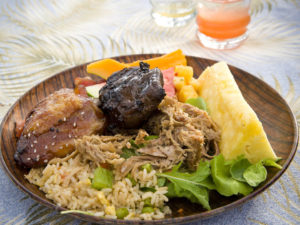
Of course, one of the main attractions of the Hawaiian luau is the kau kau, or food. Although served buffet style, there is plenty of kau kau to go around, made from fresh, locally sourced ingredients.
Kui
Today, most luaus greet their guests with a lei (see lei below). Although expensive, leis are often made from fresh flowers that are strung together using a needle and string. These lei are known as kui lei, with kui referencing the stringing method used.
Lau Lau
A traditional Hawaiian dish, and a local favorite, lau lau is a staple of the Hawaiian luau. Pork, chicken, and/or fish are wrapped in ti leaves and then carefully placed in the imu. Then, it’s slow-roasted until incredibly tender and flavorful.
Lei

The lei is a garland made from flowers, shells, or nuts which is then delicately strung into a necklace or headband piece. Leis are a symbol of friendship and love and are undoubtedly a big part of Hawaiian tradition. Beyond luaus, lei are used for celebrations of all kinds, with new graduates often loaded down with so many lei their faces are barely visible. When you’re done with a lei, it’s considered disrespectful to throw it away. Instead, hang it from a tree or bury it, to return it to nature.
Limu
While you’re glancing over the spread of menu options, you may see “limu” in some of the dishes. Limu refers to dozens of different species of seaweed that are used in many traditional Hawaiian dishes.
Lomi Lomi
Lomi lomi, meaning “massaged,” is a traditional side dish made from salmon with diced tomatoes and onions. During the preparation of the dish, the salmon is massaged into tiny pieces to ensure that all the small bones have been removed.
Luau

What is a luau, exactly? Trace the term back far enough and you’ll find that luau was a chicken or squid dish made with taro leaves (luau in Hawaiian) and baked in coconut milk. Newspapers from the mid-19th century were the first recorded use of the word “luau” to mean feast.
Mahalo
Whenever you want to show appreciation for something, instead of saying “thank you,” say “mahalo!” It’s the Hawaiian way of saying thank you.
Malihini
You may not hear the word “malihini” at a luau, but you would probably be the malihini. In Hawaiian, malihini means “newcomer.”
Niu
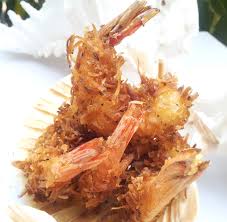
At a Hawaiian luau, you may find many dishes with “niu” as an ingredient. Don’t get nervous, though. Niu is the Hawaiian word for coconut!
Ono
Want to show how much you’re enjoying your luau kau kau? Describe it as “ono,” or delicious.
Poi
There are plenty of Hawaiian staples, but poi is one you’ll see at every Hawaiian luau. Poi is made from taro, a common ingredient in many dishes. Taro root is pounded into a mash and water is added to reach the desired consistency. Depending on its thickness, poi can be eaten with one or more fingers.
Ukulele
In the entertainment portion of the evening, a mix of storytelling, music, and dance tells the history of Hawaii. Some of that music will come from a ukulele, a small guitar that you’ve likely seen or heard before. In skilled hands, the ukulele produces a relaxing, pleasant sound.
